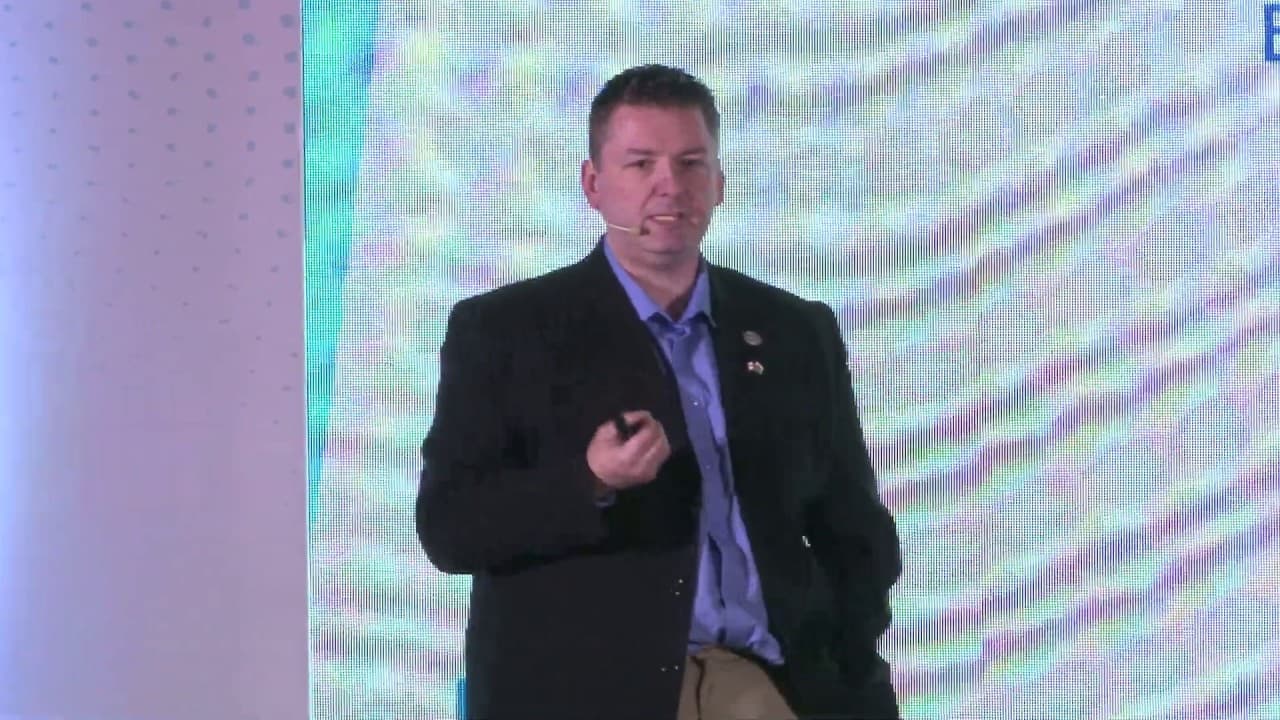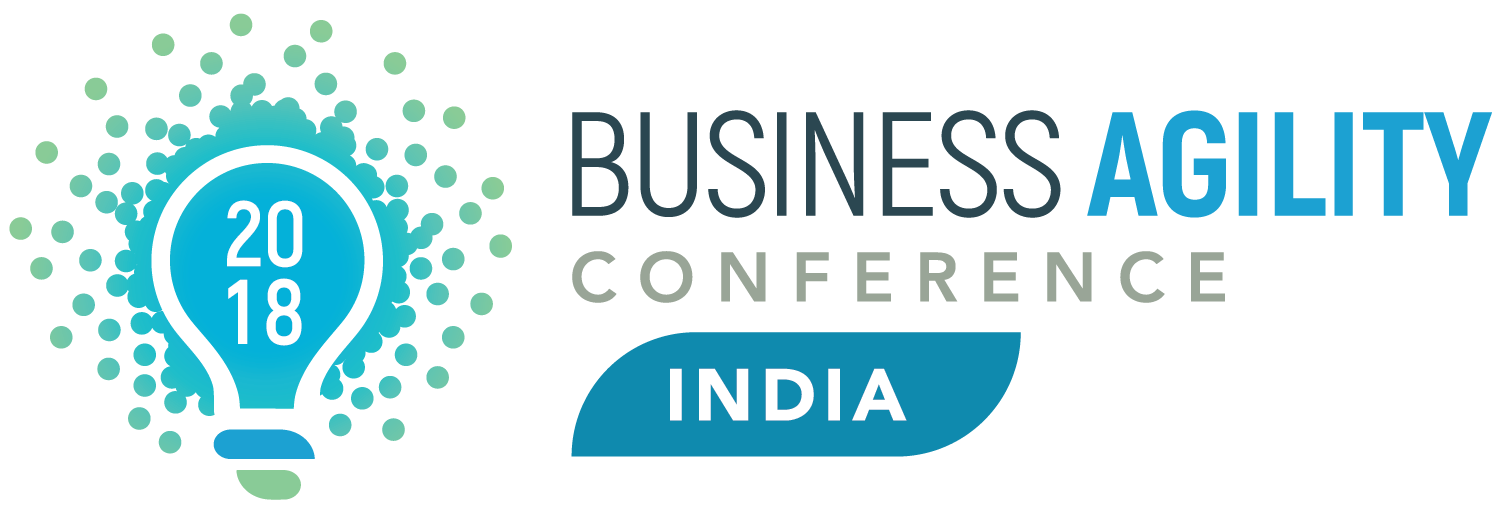I’m not going to dive into the psychology of that outfit at the moment, but I want to set the stage for what I’m about to share with you. Today, I’m going to tell you a story—a real story—about my experience working with a client in Toronto. This client is still a client today, and as Evan pointed out earlier, transforming an organization takes time. I’m currently in year 3.5 of my engagement with them.
Before we get into the details, I want you to remember four key words: culture, coach, build, business. These four words encapsulate everything I will talk about today. There’s a fifth word in the title, but I won’t mention that one just yet—you can figure it out for yourself when the time is right.
My Background
To give a little context about myself, I’ve been working in change and transformation for years. I spent 13 years with the UK government before moving to Toronto, where I now run my own company, consulting on large-scale organizational transformations. The company I’m about to talk about first approached me in 2015, but to fully understand their journey, we need to go back a little further.
The Company’s Background
This is a manufacturing company that produces industrial safety gloves—the kind used in pharmaceuticals and chemical industries, allowing people to work in extreme conditions. They are the largest manufacturer of gloves in North America, with their headquarters just outside Toronto.
In 2014, the company faced a major shift. The founder, an 85-year-old patriarch, became too infirm to continue running the business. His two sons stepped in—one as CEO and the other as Senior Vice President. At the time, the company had about 300 employees, mostly in a single location, with a secondary manufacturing plant in a small town on Canada’s east coast. The factory was essentially the entire town, where everyone knew everyone.
New Leadership, Big Plans
When the brothers took over, they had a bold vision. They wanted to expand, to grow beyond being just the number one manufacturer in North America—they wanted to dominate the global market. Surprisingly, when they examined their financials, they found a lot more money in the bank than expected. They saw this as an opportunity to scale up the business, invest in new facilities, and increase production.
However, as with many family-run businesses, great intentions don’t always translate into great execution. They had ambitious ideas—asking employees for feedback, implementing Lean processes—but they failed to truly listen to their people. Instead of using Lean as a structured process improvement, their approach was more like, “Let’s squeeze and hope it holds together.”
The Legacy of Command and Control
The real challenge wasn’t just operational inefficiency; it was cultural. The old patriarch had built a deeply entrenched command-and-control environment. When he walked into a room, employees literally stepped aside. He ruled the company the way he ruled his household, and his sons had grown up under that structure. They understood the effects of such leadership and wanted to move away from it.
Starting the Transformation
In 2016, they brought me in to help change their culture. They needed a foundation that would allow the company to grow sustainably, with empowered employees who could make decisions rather than wait to be told what to do.
By the time I joined, their expansion plans were already in motion, but the organization wasn’t ready for the scale of growth they had envisioned. My role was to help them build a culture that could support this growth.
Reshaping Leadership
One of the first things we did was examine the company’s structure. It was purely hierarchical, with decision-making concentrated at the top. However, the CEO and SVP weren’t happy with this—they didn’t want all the responsibility on their shoulders. They wanted to enable the organization, not dictate its every move.
The solution? We introduced a new leadership layer—middle management. Previously, decisions flowed directly from the top to the frontline workers. Now, we created a buffer zone: functional heads and middle managers. But bringing in leaders wasn’t enough; we needed to ensure they didn’t simply absorb the old culture or bring in their own baggage. They needed coaching.
Coaching the New Leaders
My role became coaching these new leaders, helping them navigate their roles without falling into old habits. I had to sell them on the idea of coaching itself, which meant shifting their perception of leadership from a directive approach to an enabling one.
Key elements of this coaching approach included:
- One-on-one coaching conversations with leaders to develop their skills.
- Empowering leaders to coach their teams, creating a ripple effect of cultural change.
- Ensuring confidentiality—leaders could speak openly without fear of being reported to the CEO.
- Encouraging decision-making ownership rather than reliance on top-down commands.
The goal was to create a culture where leadership was about empowerment and enablement—not control.
The Challenges
Not everyone embraced this change. Some employees preferred the old parent-child relationship, where they were simply told what to do. Some leaders expected me to magically "fix" everything. And some long-term employees resisted the shift, wanting to be given orders rather than think for themselves.
For those who couldn’t adapt, we had to make tough decisions. The company developed an exit strategy for employees who couldn’t fit into the new culture—not in a harsh way, but with the understanding that they were not aligned with the company’s future.
The Power of No Labels
Throughout this process, I never used buzzwords or labels. No "Agile," no trendy methodologies—just a coaching approach focused on making the organization better. Had I mentioned Agile early on, they likely would have rejected it outright as a fad.
It wasn’t until May 2018—three years into our journey—that I finally used the word "Agile" with them. I asked them to reflect on what we had built: an organization with an empowered workforce, flexible structures, and a culture where employees felt ownership over their work. Without even realizing it, they had become an agile organization.
The Results
Fast forward to August 1, 2018—this company had just opened its seventh global location in Honduras. From 300 employees, they had grown to 2,000 staff worldwide, with an additional 1,500 outsourced employees in a Chinese factory. Their products were now sold across North America, South America, Europe, and the Middle East, with plans to expand into Asia and Africa.
All of this was made possible by a fundamental cultural shift. Leadership coaching became the foundation that enabled their explosive growth. By developing leaders who truly led—who empowered rather than controlled—they built an organization ready to thrive in a changing world.
Final Thoughts
When I reflect on this journey, I realize that the transformation wasn’t about Agile, Lean, or any specific methodology. It was about culture, leadership, and empowerment. That’s what made the difference.
For those who haven’t spoken with me yet, I’m always happy to discuss these ideas further. I don’t just talk about methodologies—I tell stories, because that’s where the real transformation happens.
Thank you.



 The story of a fast-growing manufacturing company – a family business with a weakness for old-school approaches, that took a leap into the unknown and embraced their change to bring forward a new leadership driven culture across 7 locations, embracing lean, agile and empowered team approaches to successfully deliver their future goals as they become a leading edge market player for their product.
The story of a fast-growing manufacturing company – a family business with a weakness for old-school approaches, that took a leap into the unknown and embraced their change to bring forward a new leadership driven culture across 7 locations, embracing lean, agile and empowered team approaches to successfully deliver their future goals as they become a leading edge market player for their product.